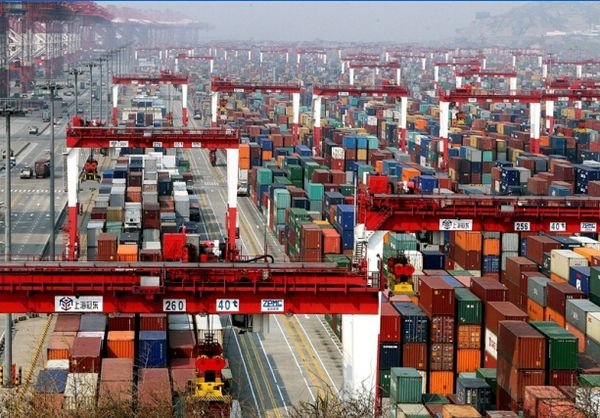集装箱码头空箱操作流程

集装箱码头的空箱操作主要分空箱进、出场操作和空箱管理两部分。
一、 空箱进场操作。 码头空箱进场有两种方式,空箱卸船进场和空箱通过检查口进场。空箱卸船进场前,码头堆场计划员必须安排空箱堆存计划。该计划安排的原则为,空箱根据箱尺码的不同,箱型的不同,按不同的持箱人分开堆存,码头与船方必须在卸箱时办理设备交接单手续。
通过检查口进场的空箱主要有两种,一种为船公司指定的用于出口装船的空箱,一种为进口重箱拆箱后返回码头。
如为船公司指定用箱,则根据堆场计划员所作堆存计划与不同的尺码,不同的箱型,按出口船名、航次堆放;如为进口箱拆箱后返回码头堆场,则根据堆场计划员所作堆存计划与持箱人的不同,分开堆放。空箱进检查口时,码头检查口与承运人必须办理交单手续。
二、 空箱出场操作。 码头空箱出场主要有两种方式,空箱装船出场和空箱通过检查口出场。
装船出场的空箱主要有两种, 一种为船公司指定用于出口装船的空箱,另一种为装驳船的空箱。码头箱务管理员应根据代理出具的工作联系单、空箱装船清单或船公司提供的“出口装船用箱指令”,安排装船用箱计划。
码头配载计划员根据箱务管理员的用箱计划以及代理提供的“场站收据”,结合船名、航次的配载情况,选择全部计划空箱或部分计划空箱配船。凡该船航次未能装船的空箱,箱务管理员应做好记录,以备下一航次装船之用。
空箱通过检查口出场主要有下述三种:
(1)门到门提空箱,主要是出口载货用空箱的提运。该空箱提运至集装箱点进行装箱后,重箱即回运本码头准备装船出口。空箱门/门提离港区,货主或内陆承运人应向集装箱代 理人提出书面申请。
集装箱代理人根据“出口集装箱预配清单”向货主或内陆承运人签发“出场集装箱设备交接单”和“进场集装箱设备交接单”。货主或内陆承运人凭出场集装箱设备交接单向码头堆场提取空箱。
(2)单提空箱,是指将空箱提运至码头外的集装箱堆场(CY)。如船公司提空箱至港外堆场,提退租箱等。码头箱务管理员应根据船公司或其代理的“空箱提运联系单”发箱,联系单上一般应写明持箱人、承运车队、流向堆场等,并注明费用的结算方法。
(3)因检验、修理、清洗、薰蒸、转运等原因需向码头提空箱。货代或内陆承运人应向集装箱代理人提出书面申请,集装箱代理人根据委托关系或有关协议向货方或内陆承运人签发“出场集装箱设备交接单”和“进场集装箱设备交接单”。
货方或内陆承运人凭“出场集装箱设备交接单”向码头堆场提取空箱,码头凭代理的工作联系单发箱。 空箱出场时,码头应与船方或承运人做好集装箱设备交接单和交接手续。
三、 堆场空箱管理。 码头堆场存放空箱的基本堆放原则,是按持箱人和箱尺寸的不同分开堆放。码头设有专用的空箱堆存箱区,一般可堆放4至5层空箱。当码头内发生拆箱作业后,拆空的箱应及时归并,并按堆垛要求堆放。
